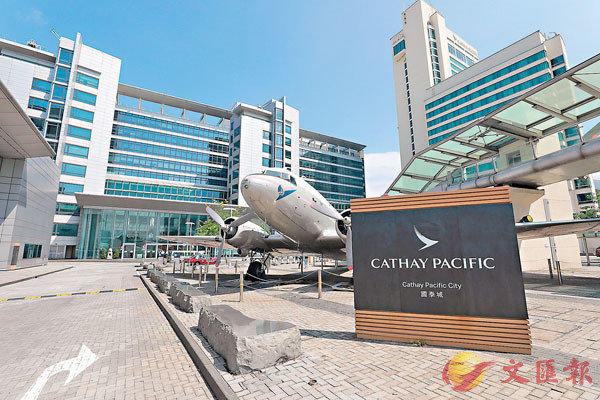 ������������|�ӽвĤG���O�N�~�p���A�������Ȧb�����K�C ��ƹϤ�
������������|�ӽвĤG���O�N�~�p���A�������Ȧb�����K�C ��ƹϤ��i���j�s�a�̱����ХO����g�٫�������A�������~�M���u�J�a�a�@���B�ä�D�s�C�F�����X���ĤG���O�N�~�p���A�ӽй��D�ƶq���Ĥ@���֬�1�U�A�M�a�h��Ū�����~�������N�V�M�p���A�~���e�˳���B���~�鮣�u����I���v�C���ﭫ�a��~�g��x���M��h���u�J�ͬ��¤��O�i�A�S�ϬF�����H�зs����A�X�s�ۡA�O�����~����A�O�٥��u�J�ͬ��C�Y�ϰ]�F���r�ٷ|�W�[�A���}���ɨ����ϫh�ϡA�F�����ΰ]�F�x�ơA���U���~�M�������L�u�H�V�v�A����ҫ�A�����������C
�g�L����O�N�~�p����A6���8�몺�̷s���~�v����6.1%�A��24.8�U�H���~�A��5���7��W5,800�H�C�F�����X���ĤG���O�N�~�p���w�I��ӽСA�έp���@����15.8�U�ӹ��D�ӽСA���Ĥ@���֬�1�U�ӡA�����Ĥ@����媺���D����7,000�ө��ӽвĤG���C�Ǫ̤��R���A�ӽмƦr�U�^�O�Y��ĵ���A�����������D�u��������������C
�Ҧp�A�Ĥ@�����ɶK�O6����������A�N�����X�U�������Ťΰ�����s�����|�ӽвĤG���O�N�~�p���A��餣�_���Ǩ�����a��Ť��q�N�j�W�ҵ����C���M�ܤ��������T�����A���[�G�~��H�ӡA�����ŷ~�ȹB�q���~�^�W�L�E���A�������Ȧb�����K�C�Y�Ϧ��ѥ[�ĤG���O�N�~�p�������D�A�����O�٤]�u�O������11��A�Y�̱��������������A����g�٥����ڥ��ﵽ�A���~�˳���B������α���ӦܡC
�J�M�O�N�~�p�����ĥλ���A�P�ɸg�٥����_��A�F���I�F�����]���ζ��ܤơA���X�зs���I�ϧU��h�����A�ѡu�ϥ��v���ܬ��u�ϥ��v�P�u�ϤH�v���|�C���U���̱��������N�~�������X�ӯS�I�G�@�O����E���ҰʤH�f�q�ƻP�A�Ȭ������~�A¾��i�H�u�ɶ������t�y���F�G�O���~����]�D�]�̱��Ӱ_�A�ëD�����ӤH�����ѩί�O�����ޭP�F�T�O���~�O�u�����A�@���̱������i�ਲ਼�t�_¾�A�ר�O�P�ȹC�B�s��B�s�������������C�o�X�譱���S�I�M�w�F���ѵu�����~���U���A�O���������ġB��²�檽������k�A�i��U�����~���~�������u�J��L�����C�h�ӫب�F�ҧ���ij�F�����X�{�ɪ����~���U���p���A�ڬ��h��b�̱������禳���X���������I�A�F�����ӻ{�u�Ҽ{�B�ɧָ���A���h�����]�̱��өӨ����ͬ����O�C
���]�ߵu�����~���U���A�F���A�פ����ԡC�F�����e�j�աA������̧ܬ̰������3,000�h�����A�w�g�O���~�װ]�F���r�}���v�����F��3,000�����A�]�F�q�q�����Z�i�������f�V�z�]�C
���i�_�{�A�q�J���X�B�O���]�Fí�w�O�F���z�]�����ߡC���O�A�s�a�̱��糧��g�٥��ͥ������j�B����ɶ������A�e�ҥ��J�C�S�����p�n�Ӳ��S�ƯS��A�u����@���q��ڻ��ѡC�v����{��8,000�������]�F�x�Ʃ|��í���A�W�������]�F�x�Ƭ��S�w���~�M�x�ҥ�������A���O�αo��ҡA�ӥB���~���U���ݼȮɩʡA���|�糧�����]�Fí���y�����j�v�T�C�������u�J���{�¤��O�i���x�ҡA�F���Z��S����[�H�] �K���ۭ���m��׳��n����2020-10-07�^
Innovative measures are needed to help wage earners
�iĶ��jAs the local economy remains pressured by the volatile Covid-19 outbreak, wage earners and some enterprises are struggling to survive. In the second phase of the government's Employment Support Scheme (ESS), however, the number of applications dropped by around 10,000 when compared to the first phase. According to experts, this may be an indication that enterprises are planning to make redundancies, and a wave of layoffs and corporate bankruptcies is going to hit Hong Kong by the end of 2020. To offer help to hard-hit sectors and wage earners who struggle with their livelihoods, the government should come up with new innovative measures. Although further relief measures from the government would increase its fiscal deficit, spending to help the needy in such times of crisis is justifiable, and the public would surely be supportive.
With two rounds of ESS, the unemployment rate between June and August remained at 6.1 per cent, and the number of unemployed increased by 5,800 to 248,000 compared with May to July. As application for the second phase ESS drew to a close, government figures show that the number of applicants dropped by around 10,000 to 158,000. Around 7,000 employers who received subsidies from the first phase opted out of the scheme. Scholars believe the drop in the number of applications is an alarming indication of a coming wave of layoffs.
For instance, Cathay Pacific Airways, which received over HK$600 million worth of wage subsidies from the first phase of ESS, has announced that both Cathay Pacific and Cathay Dragon will not apply for phase two ESS. Rumours have since emerged that there will be large-scale layoffs in the two commercial airlines. Although these are still only rumours for now, large-scale redundancies are very likely to happen eventually, as the passenger count of the local aviation sector dropped by over 90 per cent year on year.
Considering that the wage subsidies provided by the second phase ESS will only last until November this year, waves of layoffs and business closures might still hit Hong Kong if the pandemic situation remains volatile.
As the effectiveness of ESS diminishes amid a still-sluggish economy, the government should come up with more innovative measures on helping the grassroots. The target of the government's relief measures should be to provide help to both the wage earners and the market, instead of focusing only on the market. There are a few points to note regarding the hard-hit labour market of Hong Kong.
First, 90 per cent of the labour are engaged in service-related sectors where jobs are lost rapidly.
Second, the loss of jobs is due to the Covid-19 pandemic, and has nothing to do with the productivity of the labours.
Third, the loss of jobs is not permanent. Lost jobs, especially those in the tourism, retail business and hospitality sectors, will be reinstated quickly once the pandemic is brought under control.
Thus, a short-term unemployment allowance could be the most effective and direct way to aid those wage earners who either lost their jobs or have their pay cut recently.
As multiple pro-establishment political parties have already raised the issue, considering that many western countries that are hit by Covid-19 have also adopted similar measures, the government should roll out short-term unemployment allowance as soon as possible.
In reality, however, the government is quite reluctant towards providing short-term unemployment assistance to the public. The government earlier stressed that the fiscal deficit has already climbed to a record high of HK$300 billion, as more than HK$300 billion were allocated to the two rounds of the anti-epidemic fund. Financial Secretary Paul Chan Mo-po has made it clear that the administration will take a prudent approach in managing the public coffers. It is undeniable that keeping expenditure within the limits of revenues and maintaining financial stability are integral elements of the government's philosophy. Yet, the Covid-19 pandemic's impact on both the economy and the people's livelihoods are also unprecedented long-standing and profound. No one approach can solve all problems, and a special situation requires special measures.
As the government's HK$800 billion fiscal reserves should still be healthy enough, allocating more resources to help those who are in dire need of assistance can be justified.
Moreover, the proposed short-term unemployment assistance is only a temporary measure, it will not have a significant impact on the government's long-term financial stability. Some wage earners out there are now living a precarious life, how can the government just stand by and watch?��Jeffrey Tse
Exercise
1.�]�F�x��
2.�~���x��
3.�]�F���r
4.�]�F�վl
5. �˳�
Answer
1. fiscal reserves
2. foreign exchange reserves
3. budget deficit
4. budget surplus
5. to go bankrupt

